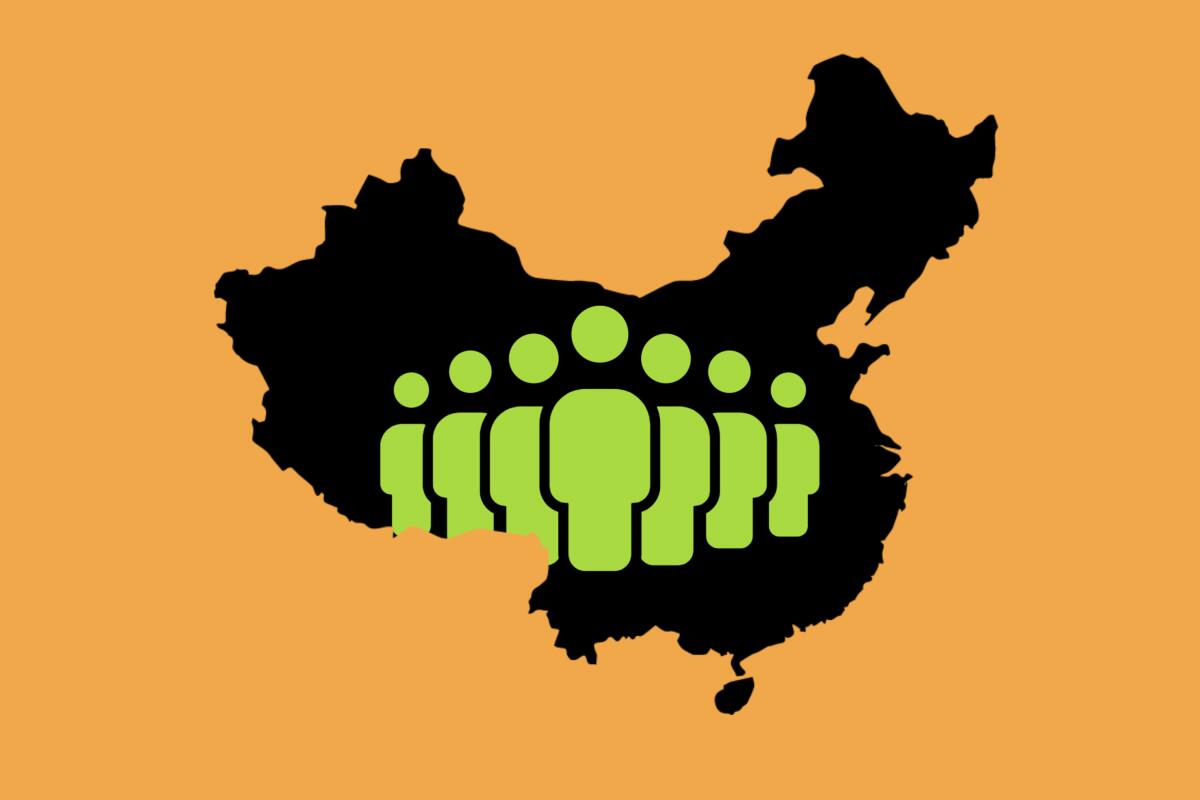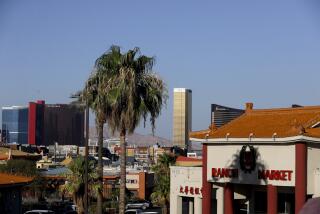I had to travel 6,000 miles to learn this lesson about being Asian American

- Share via
Sometimes, the journey to self-knowledge begins far from home in a stranger’s car.
When my family and I arrived in China in 2018, my mother’s father’s brother’s son — someone with whom we’d spoken twice on the phone — picked us up from a train station. He drove us through his lush village in Puning where much of my mother’s extended family still lives. Not only was this place our ancestral homeland, but it was where we expected to meet at least 100 relatives.
This man, whom I called “Uncle,” and I were strangers, a result of a century’s worth of forced migrations. Despite this, he and other kinfolk spent much of our two weeks there chauffeuring us — my parents, husband, aunt, me and my unborn child the size of a kumquat in my belly — to their favorite restaurants and tourist attractions in Southern China. I was taken aback by their generosity because I am someone who actively avoids picking people up from the airport.
He took a hand off the wheel and motioned to the left. “There’s the temple we pray at.”
“Ah, that’s where that is!” I blurted in Teochew, our Chinese dialect. Too effusive, too awkward, I chided myself. Silence hung in the muggy spring air.
The stillness was occupied by the plucking of a zheng, a Chinese zither, on the car stereo from a song I identified on Shazam as Jiangyang Zhuoma’s “Meet at the Yurt.”
The music reminded me of my childhood and the Chinese folk songs I had heard on my father’s tape deck. I grew up in the heavily Asian San Gabriel Valley, where I lived a dual life. At home, I conversed with my parents in Teochew. At school, I tried my best to speak English without an accent lest I be labeled a “FOB” (a.k.a. fresh off the boat) and ostracized by my peers.
My siblings and I used karaoke machines to belt out Cantopop songs from the likes of Jacky Cheung and Andy Lau. On weekends, I donned my concert costume — a Hot Topic wallet chain and black Doc Martens — and went to punk and ska shows; I’d get enveloped by the mosh pits, which was both exhilarating and terrifying.
But my puzzle pieces didn’t fit.
My maternal grandparents and paternal grandfather left China because of the Second Sino-Japanese War, a years-long conflict in the late 1930s and early ‘40s that led to the deaths of more than 20 million Chinese people.
They fled south and settled in Cambodia, where my parents were born. After escaping the brutal Khmer Rouge regime, my family immigrated to the U.S. as refugees. The civil war ultimately led to the death of my maternal grandmother, who had fallen ill while working in a labor camp. I was the lucky one who hitched a ride to America in my pregnant mother’s belly.
Although she had exchanged a few letters and phone calls with our Chinese relatives over the years, contact naturally slowed because she had never met them. It had always been my parents’ dream to visit our ancestral homeland, and our schedules finally aligned for us to take this trip.
When we arrived at a relative’s house in China that first evening, I was surprised by a couple of dozen people waiting to greet us. They regaled us with stories about my maternal grandparents, such as when my grandmother was first married and woke up at an ungodly hour to cook rice porridge for her dozens of new in-laws. My mother laughed the hardest I’d ever seen among this group of people we’d never met.
Listening to everyone tell stories about my grandparents helped color in a vivid family portrait that was previously black and white. A man in a polo shirt handed me a bowl of tang yuan, a dessert made of glutinous rice balls in a sweet ginger broth. “We’re welcoming you with tang yuan because it means ‘togetherness,’ and we’re finally here together as family,” he said.
I took a bite and cheerfully replied, “Ho ziah,” which means “tasty” in Teochew, even though I never found the dessert exciting. This became my go-to phrase for much of our journey. He smiled and told everyone I spoke our language well. I unclenched my jaw, and that dichotomy I was struggling with inside slowly slipped away.
Feeling shame for not being “Asian enough” is part of my subconscious. Before the trip, I feared my distant relatives would chastise me for not speaking Teochew fluently and for marrying someone who isn’t Chinese.
As the first American-born child in my family, I was weighed down by the Sisyphean task of balancing Eastern and Western expectations. Growing up Asian in the San Gabriel Valley meant it was hard to stand out and also important to blend in.
The effect was that the younger generation leaned into Asian culture or pulled away from it. The older folks didn’t want their kids to lose sight of their roots. My parents’ friends often teased me whenever I stumbled over words in Teochew. “You’re an ABC (American-born Chinese),” they said, laughing. I internalized that ABC shame, along with the other acronyms I carried with me.
I faced my fears the next day when at least 100 family members traveled to this village to meet us. We spent the morning rearranging ourselves by height for a photo similar to a panorama shoot of a graduating senior class. We sat in rows, shoulder to shoulder, on tall red stools. I was amazed my relatives had hired a professional photographer to document our experience.
The main event, our presence, was celebrated with a 10-course banquet lunch on par with the impressive spread of family-style dishes found at Chinese weddings stateside.
Plates were adorned with fresh red roses. Mounds of crispy bean curd-wrapped pork, fiery red prawns the length of my hand, and bowls overflowing with pink and white tang yuan spun around on lazy Susans.
“Gan bei!” everybody shouted in Mandarin as they raised their glasses for a round of shots.
“Ho ziah!” my dirty blonde, 6-foot-tall husband declared after taking a bite of an unwieldy watermelon slice. The crowd responded with uproarious laughter and applause. We joked throughout the trip that he might as well have been Brad Pitt.
Toward the end of the meal, my husband and I made our way into another room where more than a dozen younger second cousins each took turns on a karaoke microphone. They thanked us in Teochew, Mandarin and English for traveling so far to meet them. Although they stumbled over their words, they didn’t seem to have the same hang-ups I did about speaking a language perfectly.
I think about this trip as I contemplate how to raise my biracial daughter, who’s now a sweet and hilarious toddler, especially during a time of escalating anti-Asian racism in our country. I know she’ll have to navigate incredibly complex feelings, both within herself and from others. She may never feel Asian or American enough as I did, but I’ll be there to celebrate both of her cultures with her. She also has 100 aunties and uncles in China who will too.
Whenever she takes a bite of delicious food, she closes her eyes, smiles and says, “Yum!” or “Ho ziah!” Sometimes she trips over both her English and Teochew words. But it doesn’t matter if it’s not perfect.
It took traveling more than 6,000 miles, and the kindness of my extended family, to underline the lesson I’ve been learning bit by bit for decades: There are no rules to being Asian American.
More to Read
Sign up for The Wild
We’ll help you find the best places to hike, bike and run, as well as the perfect silent spots for meditation and yoga.
You may occasionally receive promotional content from the Los Angeles Times.






